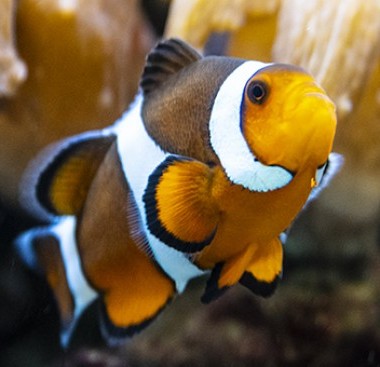Tuna Time in DC!
Tuna/dolphin bill faces new hearing
By: Staff Date: 01/10/2012 Category: | Animal Legislation | Wildlife Journal |
Against overwhelming odds, the Pacific tunafleet made enormous strides in the public debate in 1995 and 1996. But all they can say now is, "Tunafish! Are we there yet?" Not quite. And everyone who cares about the oceans and the people who fish them needs to take notice of the tuna/dolphin debate.
One nation, the United States, forced a zero tolerance standard for one species of animal as impacted by one type of gear in one area of the world. The US fleet could not operate with a zero-tolerance standard for dolphin mortality in the eastern Pacific and abandoned the area, half of the Pacific Ocean. An environmental movement addicted to crisis-style fundraising effectively moved the political arm of the philosophy forward, blacklisting the fish from the eastern Pacific. Our US fleet fled 4,000 miles away to the other side of the ocean, the western Pacific. Foreclosure sales followed with the resultant loss of almost half of our Pacific tuna fishing fleet since 1990.
But 12 countries, including the US, continue to fish in the eastern half of the Pacific Ocean, fishing for large yellowfin tuna schooling with dolphins. And the western Pacific U.S. fleet wants the entire Pacific open to responsible fishing.
Alternative methods of fishing were explored for the eastern Pacific with dismal results. Fishing on non-dolphin associating small tunas threatens the future health of the fishery and discards rise from 0.1 percent of the catch to almost 30 percent of the catch. Such fishing is clearly unacceptable in terms of ecosystem protection. So the international fleet continued their commitment to educate their fishermen in proper dolphin safety and release methods under the supervision of the scientists of the Inter-America Tropical Tuna Commission (IATTC). The IATTC has monitored Pacific tuna stocks since 1949, maintains one of the world's most complete marine databases and is respected around the world. The efforts of eastern Pacific tuna fishermen operating under the IATTC's International Dolphin Conservation Program resulted in dolphin release rates nearing 100 percent and marine mammal mortality rates a fraction of what the US Marine Mammal Protection Act allows US fishermen as biologically insignificant in our own domestic waters.
To recognize this progress, an agreement was reached in October of 1995 by all 12 of the eastern Pacific high seas tuna fishing countries and U.S. legislation was drafted to incorporate this into US law. The International Dolphin Protection Program Act, introduced into the 104th Congress by Senators Breaux and Congressman Gilchrest, also modifies the "dolphin safe" purchasing policy to include fish produced when 100 percent of the encircled dolphins are released unharmed, a "gold star" for perfect performance. The bill overwhelmingly passed the House of Representative in the summer of 1996, 316 to 108. Threats of a filibuster by Senator Boxer stalled passage in the fall of 1996 but the Clinton administration remains strongly supportive of the bill. In a letter dated October 7, 1996, President Clinton states, "Let me assure you that passing such legislation is a top priority for my Administration and for me personally. We will work with members of the bipartisan coalition...to pass such legislation as so on as possible..."
But passing this legislation will not be easy. The U.S. tuna fleet is a small community based in Southern California. There are no high seas tuna fishermen in Kansas or Idaho, New York or Montana. The political support and commitment of those involved in the fishery as well as conservationists, resource providers, animal welfare organizations and property rights advocates is key to establishing this federal legislation. Working together to support the International Dolphin Conservation Program Act (Senate Bill S.39, House of Representatives Bill H.R. 408) are organizations as diverse as Alliance for America, Greenpeace, People for the West!, Western States Coalition, World Wildlife Fund, Seafarers International Union, Center for Marine Conservation, American Sportfishing Association, and many other resource, property rights, conservation groups, unions and the governments of 12 countries. Opposing the bill, predictably, are Congressman George Miller, Senator Barbara Boxer, Sierra Club, Humane Society of the United States, PETA and a host of animal rightists and preservationist groups.
Resource providers share many problems. Hopefully, we access to the same solutions: international cooperation, education, individual responsibility, good science. Once "dolphin safe" is changed to an environmentally sound definition and the US removes eastern Pacific tunafish from the blacklist, fishing people and resource providers everywhere will benefit.
Tunafish! We're almost there! And with your help, we can succeed. With a vote expected as early as May, it's tuna time in DC. Call your Congressional representatives today!
State department official, marine mammalogist back new tuna bill
Mary Beth West, deputy assistant secretary of state, testified in favor of the tuna-dolphin bill in the House Subcommittee on Fisheries, Wildlife and Oceans on April 10. These are excerpts from her remarks.
For reasons no one fully understands, dolphins and yellowfin tuna swim together in the waters of the eastern Pacific Ocean. This area is completely outside of US jurisdiction. Fishermen have long realized that, by setting a purse seine net around dolphins in that region, they can catch large yellowfin tuna effectively and efficiently.
In 1996, because of strict fishing measures used by the countries participating in the International Dolphin Conservation Program of the Inter-American Tropical Tuna Commission, there were fewer than 3000 dolphin mortalities in the tuna fishery of the eastern tropical Pacific from a population of nearly 10 million, or only about three one-hundredths of one percent - nothing short of a phenomenal environmental success story.
The continuation of this remarkable environmental success depends on passage of HR 408 and its Senate counterpart S 39.
Current US law says that tuna is dolphin-safe only if a purse seine net has not intentionally been set around dolphins during an entire fishing trip. The idea behind this definition was to force foreign vessels to stop setting nets around dolphins. But that approach hasn't worked; US law alone cannot end the encirclement of dolphins in a fishery that is conducted by foreign fleets on the high seas and in the exclusive economic zones of other nations.
Testimony was also given by Nina Young, a marine mammalogist.
"Under current law, consumers are misled to believe that by purchasing 'dolphin-safe' tuna they have secured the protection of dolphins, that dolphins no longer die in tuna nets, and that fishers no longer chase and encircle dolphins with tuna nets," Young said. "'Dolphin-safe' is not 'dolphin- safe' if it is not 'ecosystem safe'." She said that the fishing methods identified as "dolphin-safe" result in killing other marine creatures, including endangered seas turtles, sharks, billfish, and juvenile tuna fish. "With all things connected in the ecosystem, how can we call tuna that is caught in such a wasteful manner 'dolphin-safe'? The answer: We can't."
Senator Stevens introduces Dolphin Conservation Program Act
These comments were made in the US Senate by Alaska Senator Ted Stevens (R) on January 21, 1997, as he introduced the International Dolphin Conservation Program Act, a bill to amend the 1972 Marine Mammal Protection Act. The bill has also been introduced in the House of Representatives by Representative Wayne Gilchrist (R, Maryland) and 27 co-sponsors.
Mr. President, during the 104th Congress, Senators Breaux,* Chafee, Mosley-Braun, Murkowski, Thurmond, Simpson, an I introduced legislation (S 1420) to implement the "Panama Declaration," an agreement under which 12 nations would comply with a new regime to reduce dolphin mortality and conserve marine resources in the Eastern Tropical Pacific. Our bill was approved by voice vote in the Senate Commerce Committee, and its companion (HR 2823) was passed overwhelmingly in the House of Representatives.
Because of our focus in the second session of the 104th Congress on re-authorizing the Magnuson-Stevens Fishery Conservation and Management Act, we were not able to turn to the International Dolphin Conservation Program Act until the closing weeks, and opponents of the measure were able to prevent its passage simply by objecting on the Senate floor. We believe the bill would have passed in the Senate by a large majority if they had not objected.
I am pleased today to be joined by Senators Breaux, Thurmond, and Murkowski in reintroducing the bill. On September 30, 1996, Majority Leader Lott committed to us that he will do everything he can to provide time on the Senate floor if it is necessary to pass this important measure.
The Panama Declaration would cap dolphin mortality in the ETP at 5000 dolphin per year and set a goal of eventually eliminating dolphin mortality altogether in that area. Only 20 years ago, hundreds of thousands of dolphins were being killed each year in the ETP. The declaration presents the opportunity to lock in a maximum of 5000 dolphin mortalities per year and strengthen other conservation measures relating to fishery observers, bycatch reduction, and the protection of specific stocks of dolphins in the ETP.
The dolphin mortality cap and new conservation measures under the Panama Declaration will only take effect if specific changes are made to US law. The two key changes are:
(1) a change to allow tuna caught in compliance with the Panama Declaration (including through encirclement of dolphins) to be imported into the United States; and
(2) a change so that "dolphin safe" in the US will mean tuna caught in a set in which no dolphin mortality occurred (rather than through non-encirclement).
Our bill would make these changes and allow the new regime under the Panama Declaration to go forward. If the US does not make these changes, other nations will move forward without adequate conservation measures and significant dolphin mortality may occur.
Our legislation would guarantee US consumers that no dolphins were killed during the harvest of tuna that is labeled "dolphin safe." Under existing law, dolphins may have been killed but as long as the tuna was not harvested by intentionally encircling dolphins, it can be labeled as "dolphin safe." To avoid consumer confusion and increase confidence in the "dolphin safe" label, other labels with respect to marine mammals will not be allowed. Only ETP tuna caught without killing any dolphins would be labeled as "dolphin safe."
The Administration helped negotiate the Panama Declaration, and the President and Vice-president strongly support our legislation to implement it. The bill is also supported by the US tuna boat owners; mainstream environmental groups such as Greenpeace, the Center for Marine Conservation, the Environmental Defense Fund, the National Wildlife Federation, and the World Wildlife Fund; the National Fisherman's Union, Seafarers International, and United Industrial Workers; the 12 nations who signed the Panama Declaration (Belize, Columbia, Costa Rica, Ecuador, France, Honduras, Mexico, Panama, Spain, Vanuatu, and Venezuela), and editorial boards of a number of the major US newspapers.
* Senator John Breaux, D, Louisiana; Senator John Chaffee, R, Rhode Island; Senator Carol Mosley-Braun, D, Illinois; Senator Frank Murkowski, R, Alaska; Senator Strom Thurmond, R, South Carolina; and former Senator Alan Simpson.
About The Author
All Authors Of This Article: | Patti Strand |












